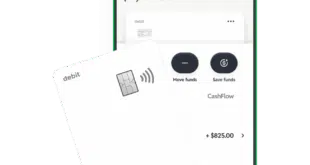Europay-MasterCard-Visa (EMV) chip cards have entered the classic phase of huge percentage growth from a very small base, according to new U.S. figures from Visa Inc. The leading network this week reported that American financial institutions had issued 3.5 million Visa-branded EMV cards as of March 31, an increase of 133% from 1.5 million as of last June 30 and virtually zero in August 2011 when Visa announced its EMV migration plans.
EMV cards are still but a few drops in Visa’s plastic ocean, however. At the end of 2012, Visa’s U.S. issuers had pumped out 716 million cards bearing the network’s brand—277 million credit cards and 439 million debit cards, according to a company report. That means the magnetic-stripe cards that EMV chip cards are meant to replace still command more than 99.5% of the market.
But Stephanie Ericksen, head of authentication product at Visa, predicts that, based on the experience of other countries that switched from mag-stripe to EMV cards, chip cards will account for half or more of the U.S. card base by 2016 or 2017. The driving factor is the major card networks’ October 2015 U.S. liability-shift deadline for fraudulent transactions. After that date, merchants that don’t use functioning EMV point-of-sale card readers will be forced to assume liability in cases of counterfeit fraud, which is far higher on mag-stripe cards than chip cards.
“We tend to see critical mass reached somewhere in a year or two after the liability-shift date, critical mass being 50%,” Ericksen says.
Most U.S. EMV issuers started out offering chip-based credit cards to international travelers visiting Europe and other countries where EMV cards are the norm, according to Ericksen. In addition, most U.S. chip cards are of the contact type that are touched against or “dipped” into an EMV terminal because that kind is the most common abroad.
Other forms include contactless chip cards, which some U.S. issuers offer in order to facilitate fast payments in high-throughput merchant locations such as fast-food restaurants and transit stations, and so-called dual-interface cards, which are the most expensive but work with both contact and contactless EMV terminals.
David Kaminsky, a senior analyst at Maynard, Mass.-based Mercator Advisory Group Inc. who is following the EMV migration, says the more than doubling of Visa’s EMV card base in less than a year “is clearly a response to the upcoming U.S. liability shift deadline” rather than a response to a big increase in international travel. “It’s pretty much in that location where it’s a good start and we can see progress, but it’s got a long way to go,” he says.
Kaminsky estimates that only a low-single-digits percentage of the approximately 8 million card-accepting U.S. merchant locations have activated the software and related systems to actually process an EMV transaction today, even though EMV hardware is now becoming widespread. “Why would they [merchants] take the time to enable the EMV chip function on a terminal? I don’t expect to see these numbers increase until we get closer to that October 2015 deadline.”
Visa’s Ericksen agrees that the bulk of merchants’ EMV expense will come not from hardware but from the new software, middleware, and related systems they’ll need. But she also notes that the new technology will pave the way for mobile-phone-based payments. “That is a kind of future-proofing investment if you will,” she says.
In addition to the 2015 liability shift (the deadline is 2017 for automated fuel pumps), a major factor influencing growth of the EMV base is issuers’ normal card-reissuance schedules, notes Randy Vanderhoof, executive director of the Smart Card Alliance, an industry trade group based in Princeton Junction, N.J. Credit and debit card issuers typically replace cards every two or three years.
“Since every card has a built-in refresh schedule, some early adopters are entering the time frame when it is no longer economically prudent to continue to issue magnetic-stripe-only cards,” Vanderhoof tells Digital Transactions News by e-mail.
A page on the Smart Card Alliance’s Web site currently lists 15 U.S. EMV card issuers, including U.S. Bancorp, Wells Fargo & Co., JPMorgan Chase & Co., Citigroup Inc., Bank of America Corp., State Employees Credit Union, and American Express Co.
The coming of EMV cards has been accompanied by major controversies, including not only the costs merchants will bear to retrofit their payment processes but also the technical difficulties in making chip-based debit cards compliant with the Durbin Amendment, which requires debit cards to access at least two unaffiliated debit networks.
And some observers note that EMV, while new to the United States, was introduced in the 1990s and assert that it’s becoming old technology. In an opinion piece in the upcoming June issue of Digital Transactions magazine entitled “Too Late for EMV in the United States,” security columnist Gideon Samid argues that mobile phones are on their way to replacing plastic cards as payment devices.





